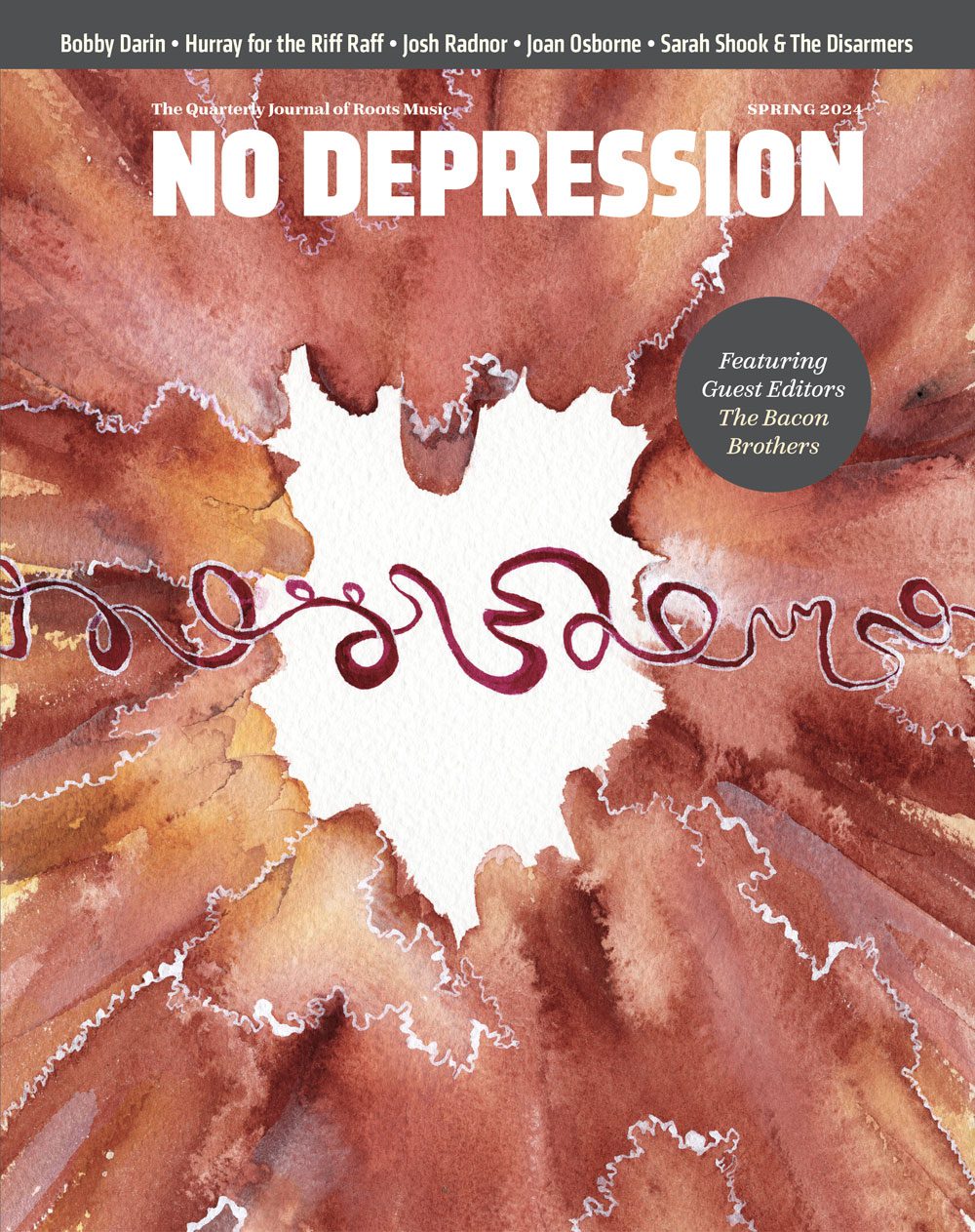After two tribute albums, a TNN documentary, consistently great television appearances and recharged concert performances, the stage was set for Merle Haggard to deliver something as undeniably vital and eventful as Johnny Cash’s American Recordings. Haggard’s new album, 1996, isn’t quite up to that level, but it’s still very impressive.
It kicks off in grand style with “Sin City Blues”, a Dixieland-meets-Western swing romp, before moving straight into Iris DeMent’s “No Time To Cry”. The song is a devastatingly haunting work in its own right, but the force of its emotion is doubled when Haggard puts the power of his own legend behind it. He has always incorporated material by contemporary writers into his own repertoire; songs such as “Sidewalks of Chicago” and “The Roots of My Raising” usually fit so well into his own catalog that you tend to forget he didn’t write them.
“No Time To Cry” actually sounds like something Haggard would write at the top of his form. Sometimes his “rolling down hill like a snowball headed for hell” pessimism can sound a little self-righteous and cranky, but here his voice brims with sadness and regret as the song’s character tries to cope with personal loss and justify his ability to remain detached from all too common modern-day horrors. As a protective mechanism, the only way for him to continue on is to shut down emotionally. It’s a perfect song for Haggard now: It allows him to make a social comment without a hint of the moralistic lecturing that occasionally creeps into some of his windier songs.
The next song, “Beer Can Hill”, is considerably lighter fare. It’s an irresistibly catchy sing-along which serves as an excuse to invite a few of his neighbors over to reminisce about the old days. The tune features backing vocal contributions from fellow Bakersfield legend Buck Owens, early mentor Bob Teague and modern-day believer Dwight Yoakam.
1996 also introduces two new truck-driving songs. The first, “Truck Driver’s Blues”, is Haggard and The Strangers at their best, combining subtle island rhythms with their traditional sound. Longtime Stranger Norman Hamlet plays exceptional dobro and steel guitar as Haggard, in total command of his phrasing and inflection, effortlessly proves he’s still one of the best vocalists in country music. This feels like a classic from the first listen. The second, “Too Many Highways”, is about one of the occupational hazards the trucker has to face — the toll it can take on your personal life. This song is less effective but still has some great lines, as Hag metaphorically waxes, “Like snow on a mountain and ice on the curves / Leaving her lonely is sure hell on the nerves.”
“Five Days A Week” is a “Working Man Blues” retread but is boosted by a strong guest vocal by fellow blue-collar advocate Johnny Paycheck. And “Kids Get Lonely Too” is immediately likable, thanks to a tender, yearning vocal by Haggard (and when’s the last time you heard a penny whistle on a country album?).
On “If Anyone Ought To Know”, the lonely and brokenhearted gravitate with their sad stories toward a man in a bar whom they sense as a fellow traveler on the Lost Highway. The song is credited with a 1976 copyright; it was well worth digging out of the vaults, as it’s one of the album’s transcendent performances and is strong enough to have a lasting impact. Haggard’s world-weary vocal is full of regret and bitter acknowledgement as the song’s character seems to meld with Haggard’s own tortured person: “Every night some lonely lady wants to tell me all about her broken home/It’s like they can see inside my mind/They act as though they know I’ll understand/Guess they know it when they hear my name?And feel it when they touch my tremblin’ hand.”
The final two songs on the album don’t cut it. “Untanglin’ My Mind” is intriguingly annotated in the credits this way: “Written by Merle Haggard. This is the song Clint Black re-wrote and became co-writer after the fact. This is the original Haggard version.” Even though Paycheck (the Anti-Clint?) makes another appearance and the band really cooks on the extended vamp, this isn’t one of Haggard’s better efforts. And while I can appreciate the sentiment and environmental concern that inspired “Winds of Change” — described in the liner notes as “a song with an urgent message from Mother Earth” — not even a great appearance by John Anderson can save it for me.
As a whole, this album isn’t as strong and consistent as 1979’s 190 Proof or as timely as 1981’s Big City. But when the 1996 year-end best-of lists are put to paper, it’s doubtful there will be a country album that can compete with this one. When he’s good, Haggard casts a giant shadow; when he’s great, as he is several times on this album, he’s untouchable.
A footnote: Sadly, the title and graphics virtually duplicate the inexcusably lame look of the Haggard’s 1994 album of a couple years ago. How difficult would it have been to produce a photo of him glaring at the camera with that gaunt face, those sunken eyes with their “been there” vibe, and the simple words No Time To Cry somewhere near the bottom? Who cares if he looks 100 years old? He’s Merle Haggard.


